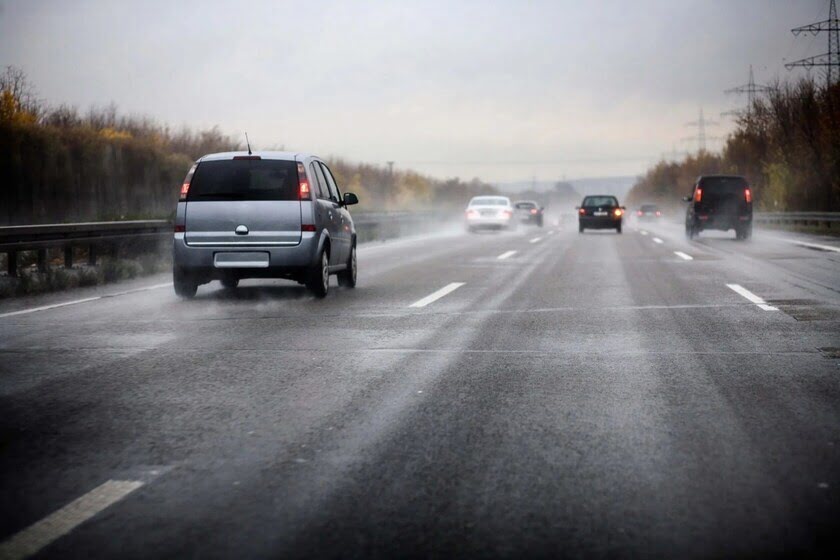Avoid Risk on the Road—Our Top Safety Tips

June 21, 2020 Topic: Safety Tips
Prevention and planning for safe driving may take a little time up front, but will spare you from dealing with the consequences of a breakdown—or worse yet, a crash—later. Our top safety tips, below:
Avoid distractions
Each day, approximately nine people are killed and more than 1,000 injured in crashes that are reported to involve a distracted driver. Distracted driving is driving while doing another activity that takes your attention away from driving. Texting is the most alarming distraction. Sending or reading a text takes your eyes off the road for approximately five seconds. At 55 mph, that’s like driving the length of an entire football field with your eyes closed. You cannot drive safely unless the task of driving has your full attention. Any non-driving activity you engage in is a potential distraction and increases your risk of crashing. Keep your eyes on the road, hands on the wheel and avoid distractions of any kind.
Don’t drive drowsy
You might think a few yawns are nothing to worry about, but just being a little drowsy is enough to increase your risk of getting in an accident. In fact, the AAA Foundation for Traffic Safety estimates that 21 percent of fatal motor vehicle crashes involve driver fatigue. One third of crashes involving a drowsy driver also result in injuries. Responses can range from dozing off for a few seconds at a time to zoning out and losing all focus on the road. At highway speeds, one or two seconds of inattention can create a high risk of danger. People can move from drowsy to sound asleep without warning, so if you feel the least bit groggy have a friend take over behind the wheel, find a rest area where you can catch a few hours of sleep or take a break until you’re feeling more alert.
Regular maintenance
Vehicle maintenance isn’t only important to extend your car’s life, it’s also a safety precaution. One of the main causes of car accidents is poor vehicle maintenance. Many maintenance issues are addressed by state-mandated vehicle inspections. However, there could be a year or more between inspections, so car owners need to be aware of any potential safety issues and get them repaired before they lead to an accident. Regular maintenance such as tune-ups, oil changes, battery checks, and tire rotations go a long way toward preventing breakdowns. One of the most common maintenance problems that can lead to a disastrous situation are a car’s brakes. If you notice some softness in the brake pedal, feel a vibration when the brakes are applied, repeatedly need to add brake fluid to the major cylinder, or the car pulls to one side during braking, get them checked out immediately. You could have faulty brakes or worn out brake pads—both of which could cause danger to yourself and other drivers.
Stay back
It’s important to keep a safe distance between yourself and the driver ahead of you and not follow too closely. You need enough time to react if the car in front of you makes a sudden turn or stop. According to the National Highway Traffic Safety Administration (NHTSA) approximately 23 percent of all motor vehicle crashes occur due to rear-end collisions. A rule of thumb to avoid tailgating is the “three-second rule.” It’s simple—ensure that you and the car ahead of you have three seconds of distance between each other. Find a stationary object on the side of the road. When the car ahead of you passes it, start counting seconds. At night or in inclement weather, double the recommended time to six seconds.
Check the weather
If you’re driving through fog, heavy rain, a snowstorm or on icy roads, be extra cautious. The U.S. Department of Transportation reports that 22 percent of vehicle crashes are weather-related. Drive below the speed limit, if necessary, maintain extra space between you and the car ahead, and be careful around curves. If you have to pull over due to adverse weather, find a safe spot as far away from the road as possible to avoid being hit by other drivers—especially if the visibility is low.
Wear your seatbelt
Seat belts prevent you from being thrown around the inside of a crashing vehicle or, worse, thrown through the windshield and flung completely out of the vehicle. It may seem like common knowledge, but many people still don’t “click it”. The National Center for Statistics and Analysis (NCSA) reveal that more than half of all accident fatalities were people who weren’t using seat belts. The numbers are much scarier for young drivers and passengers: A staggering 70 percent of fatal crash victims between the ages of 13 and 15 weren’t wearing seatbelts. Please, buckle up!
Drive safe out there—and if you need a brakes check-up, contact us to schedule your free inspection.
